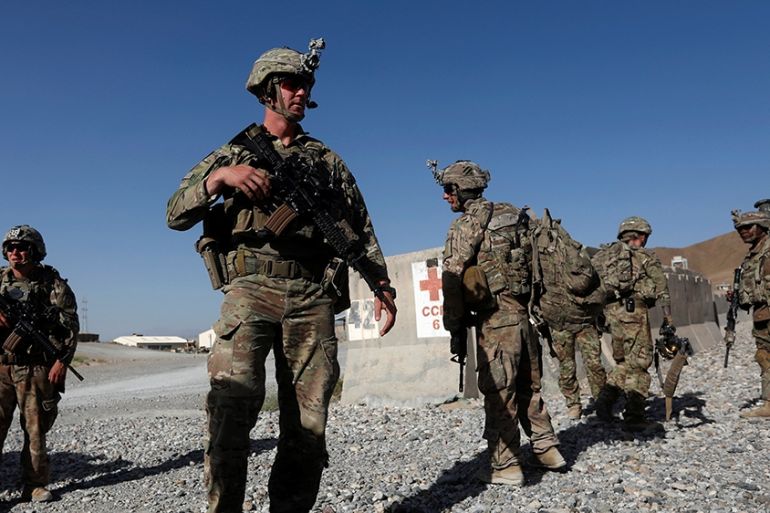US begins troop withdrawal from Afghanistan: US official
The pullout comes as Afghanistan’s rival leaders were sworn in as president in separate ceremonies.

US troops have started to leave Afghanistan for the initial troop withdrawal required in the US-Taliban agreement, a spokesman for US Forces in Afghanistan announced on Monday, amid political chaos in Kabul that threatens the deal.
The US will cut the number of forces in the country to 8,600, according to a statement by US Forces Afghanistan spokesman Colonel Sonny Leggett.
Keep reading
list of 3 itemsDozens killed in Kabul ceremony attack claimed by ISIL
ICC authorises inquiry into alleged Afghan war crimes
“In accordance with the US-Islamic Republic of Afghanistan Joint Declaration and the US-Taliban Agreement, US Forces Afghanistan (USFOR-A) has begun its conditions-based reduction of forces to 8,600 over 135 days,” Leggett said in the statement quoted by US media.
“USFOR-A maintains all the military means and authorities to accomplish our objectives -including conducting counterterrorism operations against al-Qaeda and ISIS-K and providing support to the Afghan National Defense and Security Forces,” he added. “USFOR-A is on track to meet directed force levels while retaining the necessary capabilities.”
The pullout came as Afghanistan’s rival leaders were each sworn in as president in separate ceremonies on Monday, creating a complication for the US as it figures out how to move forward on the agreement, signed late last month, and end the 18-year war.
Political crisis or not, one president in Kabul or two, US is wasting no time — the drawdown to 8,600 over 135 days has officially begun, the US military says in a statement. pic.twitter.com/0sSjWnf1Yx
— Mujib Mashal (@MujMash) March 9, 2020
The sharpening dispute between President Ashraf Ghani, who was declared the winner of last September’s election, and his rival Abdullah Abdullah, who charged fraud in the vote along with the elections complaints commission, threatens to wreck the next key steps and even risks devolving into new violence.
The US has not tied the withdrawal to political stability in Afghanistan or any specific outcome from the all-Afghan peace talks. Instead, it depends on the Taliban meeting its commitment to prevent “any group or individual, including al-Qaeda, from using the soil of Afghanistan to threaten the security of the US and its allies.”
Under the peace agreement, the US troop withdrawal had to begin within 10 days after the deal was signed on February 29. Defense Secretary Mark Esper said on March 2 that he had already approved the start of the withdrawal, which would then be coordinated by military commanders in Afghanistan.
The US official said that the troops leaving now had been scheduled to depart, but they will not be replaced. Esper has said General Scott Miller, the US commander in Kabul, will pause the withdrawal and assess conditions once the troop level goes down to 8,600.
The long-term plan is for the US to remove all troops within 14 months if security conditions are met.
The agreement with the Taliban followed a seven-day “reduction in violence” period that, from the Trump administration’s viewpoint, was meant to test the Taliban’s seriousness about moving towards a final peace agreement.